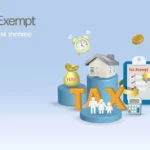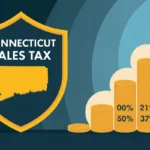Looking for affordable housing in today’s challenging rental market? Or maybe you’re a real estate investor interested in stable, socially responsible development opportunities? Tax credit apartments, developed under the Low-Income Housing Tax Credit program, offer practical solutions for both renters and property owners.

Content
What Is Tax Credit Apartments?
At its core, tax credit apartments is part of a government-backed initiative to make housing more affordable for low- to moderate-income individuals and families. It’s made possible through the LIHTC program, a federal subsidy that incentivizes developers to build or renovate apartments by offering valuable tax credits.
How the LIHTC Program Works
The Low-Income Housing Tax Credit is not a direct subsidy to renters, but a tool for developers and investors. Here’s how the system works step by step:
1. Allocation of Credits
Each year, the IRS allocates tax credits to state housing finance agencies based on population. These agencies then award the credits to developers through a competitive application process.
2. Development and Compliance
Developers use the credits (or sell them to investors to raise capital) to build or rehabilitate multi-family rental properties. In exchange, they commit to setting aside a portion of the units as income-restricted housing.
3. Rent and Income Limits
Rents are capped based on Area Median Income, typically set at 30%, 50%, or 60% of AMI, depending on the property’s commitments. For example, if the AMI for a family of four is $80,000, someone earning $40,000 may qualify for a 50% AMI unit.
4. Ongoing Oversight
Properties must maintain compliance with income and rent restrictions, tenant eligibility, and reporting requirements. State agencies conduct regular audits and site inspections.
Who Is Eligible for a Tax Credit Apartments?
Eligibility depends on your household income, which must fall within a set percentage of the local Area Median Income. Here’s a general breakdown of the criteria:
Income Limits
- Typically between 30% and 60% of AMI
- Varies by household size
- Updated annually by HUD
Additional Requirements
- Must be a U.S. citizen or have eligible immigration status
- Pass standard background and credit checks
- Provide documentation of income (e.g., pay stubs, tax returns)
Key Benefits for Renters
Why do millions of Americans seek out tax credit apartments every year?
1. Lower Rent
Rents are capped based on income, often hundreds of dollars below market rate. This provides significant relief in high-cost urban and suburban areas.
2. Stability and Security
Most LIHTC properties have long-term affordability commitments, ensuring housing stability for decades.
3. Mixed-Income Communities
Unlike other subsidized housing programs, tax credit apartments are often part of mixed-income developments, helping reduce stigmas and create more inclusive neighborhoods.
Advantages for Property Owners and Real Estate Investors
For developers and investors, affordable housing tax credits offer several financial and social incentives:
1. Dollar-for-Dollar Tax Reduction
Each tax credit directly reduces the federal tax owed, making them highly valuable—especially to institutional investors or syndicates.
2. Reliable Occupancy
Because of the demand for affordable housing, LIHTC properties tend to maintain high occupancy rates, even during economic downturns.
3. Supportive Financing Options
Many LIHTC projects also qualify for:
- Additional tax abatements
- Opportunity Zone incentives
How to Apply for a Tax Credit Apartments
Ready to find a tax credit unit? Here’s what the process looks like:
Step 1: Search Listings
Use tools like:
- AffordableHousingOnline.com
- HUD’s Resource Locator
- Your State Housing Finance Agency
Step 2: Contact Property Managers
Reach out directly to properties listed as LIHTC or income-restricted apartments. Ask about:
- Current availability
- Income limits
- Application waitlists
Step 3: Gather Documentation
Be prepared to provide:
- Recent tax returns
- Pay stubs or benefit letters
- Photo ID
Step 4: Submit Application and Wait
Some areas have long waiting lists. Apply to multiple properties and follow up regularly.
Challenges and Considerations
While tax credit apartments offer many benefits, there are also a few challenges:
- Long Waitlists: High demand can mean waiting months or years in certain cities.
- Strict Compliance: Tenants must consistently meet income and eligibility rules.
- Paperwork Heavy: The verification process can be time-consuming and requires precise documentation.
Conclusion: Should You Consider Tax Credit Apartments?
Whether you’re a renter seeking stability in a tight housing market or an investor looking to balance profit with purpose, tax credit apartments are worth serious consideration.
They offer a sustainable housing solution, foster diverse communities, and unlock meaningful economic opportunities for tenants and developers alike.
FAQs
Can I get evicted if my income increases?
Not necessarily. You can often stay, but new renters must meet eligibility requirements to maintain the property’s compliance.
Are utilities included in the rent?
It varies. Some properties include certain utilities, others don’t. Always confirm during the application process.

Hi, I’m Dan and I write blogs for businesses. I’ve been doing this since 1994 and have written over 10,000 blog posts (and counting). I love writing about what you’re passionate about and how to make your business successful. So if you want to know more about blogging or social media marketing, just let me know!



